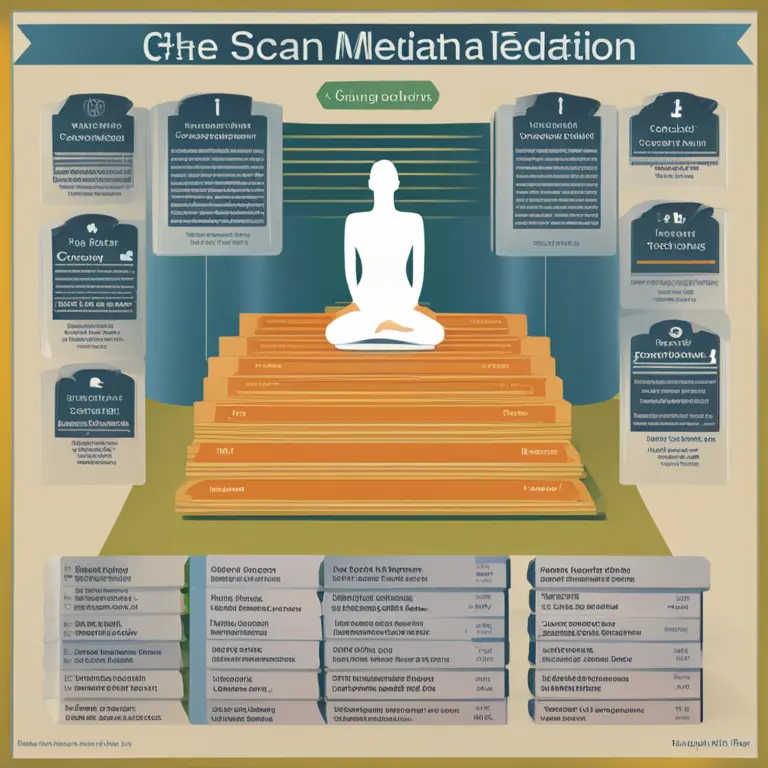
Varieties of Meditation Techniques for Modern Practitioners
Explore a range of meditation methods to enhance mindfulness and tranquility in your daily life.
article by Hina Kurosawa
Meditation: A Versatile Practice
Meditation has soared in popularity as a cornerstone of self-care, gaining widespread recognition for its mental, emotional, and physical health benefits. The practice dates back thousands of years, with diverse techniques stemming from various cultural and spiritual traditions. Today's landscape of meditation offers an array of methods catering to the unique preferences and goals of individuals. This article presents a curated selection of meditation techniques that are both timeless and adapted for contemporary lifestyles. Whether you are new to meditation or an experienced practitioner, these methods can serve as a guide to deepen your practice or to start a new journey toward inner peace.

Focus-Driven Meditation: Concentration Techniques
Focus-driven or concentration meditation is one of the foundational approaches, typically involving the redirection of attention to a single point of reference. It's a practice that can be enhanced through focusing on a mantra, the breath, or a visual object. The goal is to cultivate prolonged periods of concentration, training the mind to become undistracted and present. This practice can fortify the ability to maintain focus in daily tasks, reduce stress, and contribute to a clearer state of mind. Suitable for all levels, concentration meditation is a starting point for many on their mindfulness journey.

Mindfulness Meditation: The Art of Awareness
Mindfulness meditation is a technique that encourages acute awareness of the present moment. It involves observing thoughts, feelings, and sensations without judgment. Practitioners learn to witness their inner experience, promoting a state of detached observation. This self-awareness fosters a deeper connection with oneself and can lead to profound insights about habitual patterns of thought. Mindfulness is at the heart of many therapeutic practices and is recognized for its effectiveness in managing anxiety, depression, and stress-related disorders.

Body Scan Meditation: Relaxation through Awareness
The body scan technique is a practice within the mindfulness framework that promotes relaxation and body awareness. Participants are guided through each part of their body, instructed to consciously release tension while breathing deeply. This technique helps in establishing a mind-body connection, often leading to reduced physical discomfort and enhanced emotional well-being. By acknowledging areas of tightness or pain, individuals can learn how to manage and soothe stress responses within the body.

Moving Meditation: Dynamic Mindfulness
Not all meditation requires stillness. Moving meditation, which includes practices like tai chi, qigong, and walking meditation, integrates slow, deliberate movements with a focused, meditative state of mind. These techniques are excellent for those who find peace in action and are seeking to integrate mindfulness into physical activity. Moving meditation can improve physical balance, coordination, and grace, all while providing the calming effects of traditional seated meditation.
Transcendental Meditation: Beyond Ordinary Consciousness
Transcendental Meditation (TM) is a form of silent mantra meditation developed by Maharishi Mahesh Yogi. TM practitioners use a personalized mantra to dive deeper into their consciousness, aiming to reach a state of pure awareness or transcendence. This practice has been studied extensively for its potential to reduce stress and anxiety, as well as improve cognitive functioning and overall quality of life. Though it requires specific instruction and dedication, many find it to be an invaluable tool for spiritual development.
Loving-Kindness Meditation: Cultivating Compassion
Loving-kindness meditation, also known as Metta bhavana, is a practice that involves directing feelings of love and kindness towards oneself and others. It begins with fostering a sense of warmth and compassion internally, then gradually expanding these feelings outwards to friends, acquaintances, and ultimately, all sentient beings. Regular practice can enhance emotional resilience, foster positive attitudes, and improve interpersonal relations. This form of meditation has roots in Buddhist traditions but has gained universal appeal for its heart-opening benefits.
Published: 2/12/2024
Modified: 2/12/2024
More predictions
Come back here soon to learn more about yourself and your future


The Benefits of Meditation Music
Discover the benefits of meditation music for enhancing mindfulness practices and spiritual alignment, while diving into the celestial influence on your inner peace journey.


The Heart of Meditation: A Journey Inward
Discover the heart of meditation, its benefits, and how to integrate this ancient practice into modern life for peace and self-discovery.


Breathing Practices for Deeper Meditation
Delve into effective breathing methods that enhance meditation practices, fostering tranquility and inner peace.